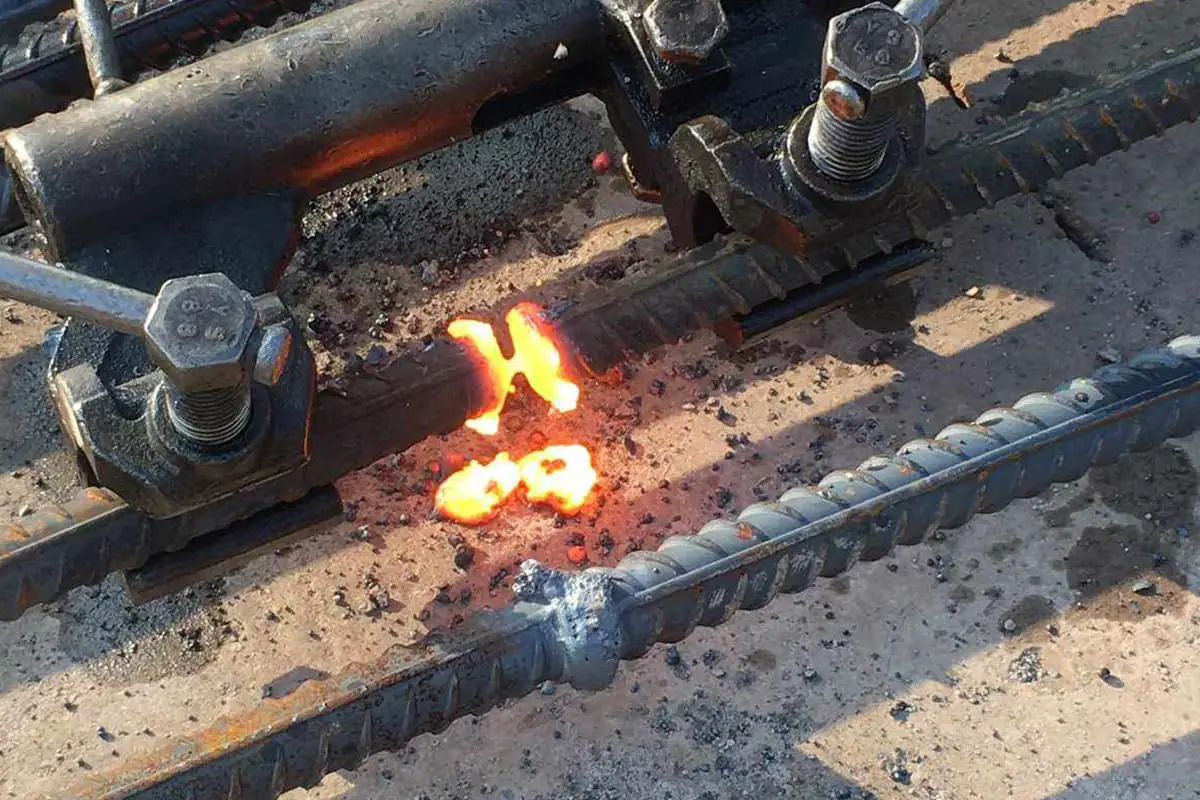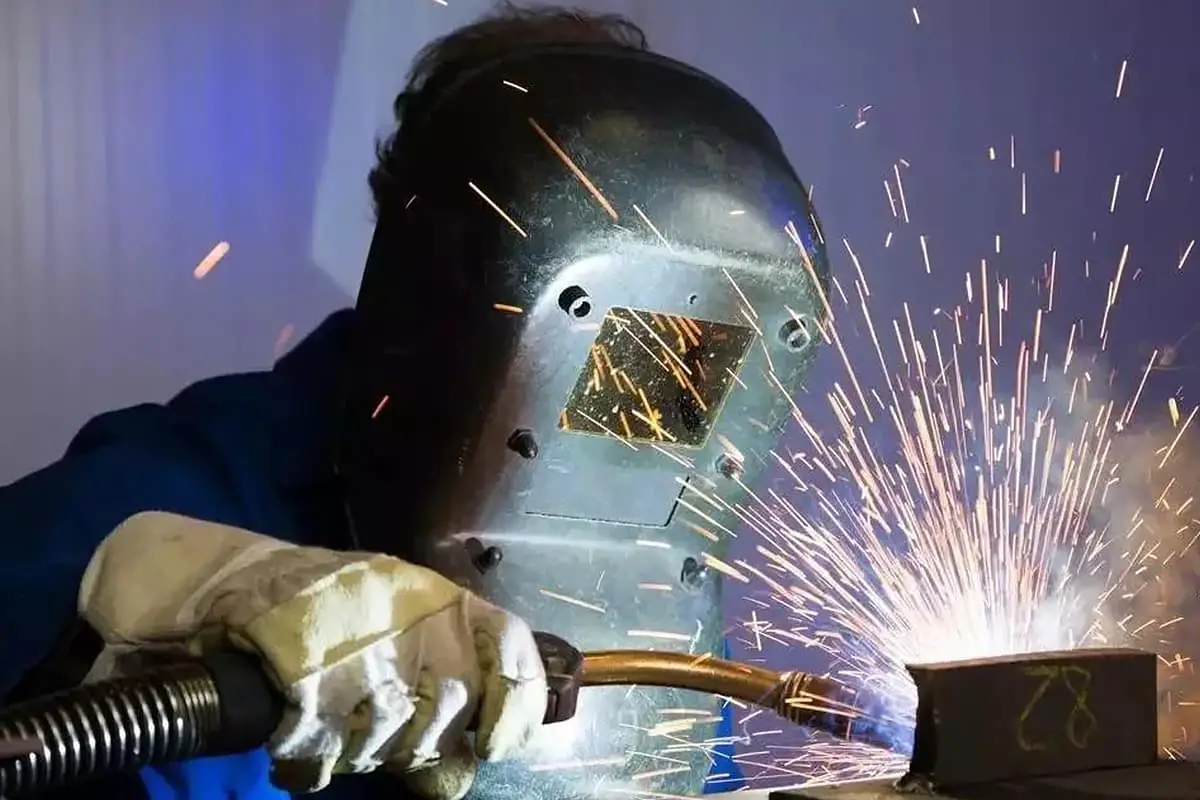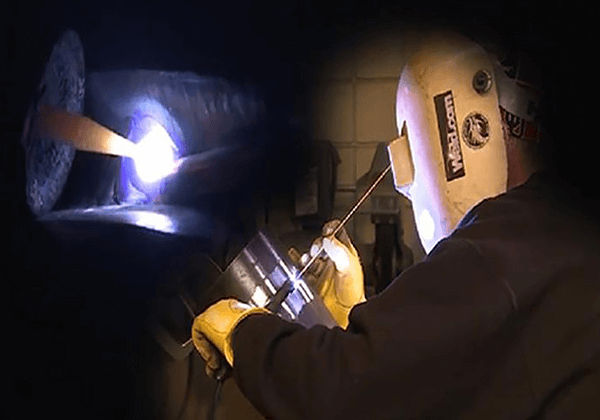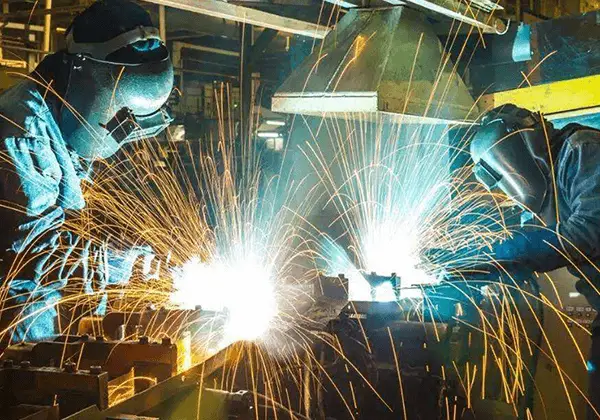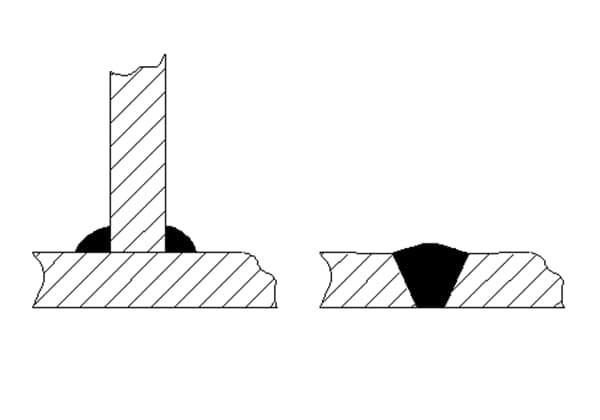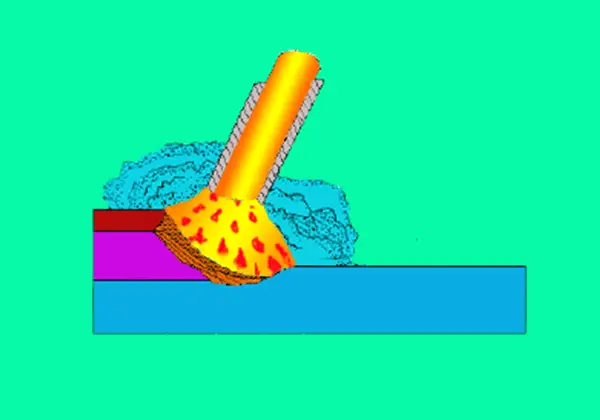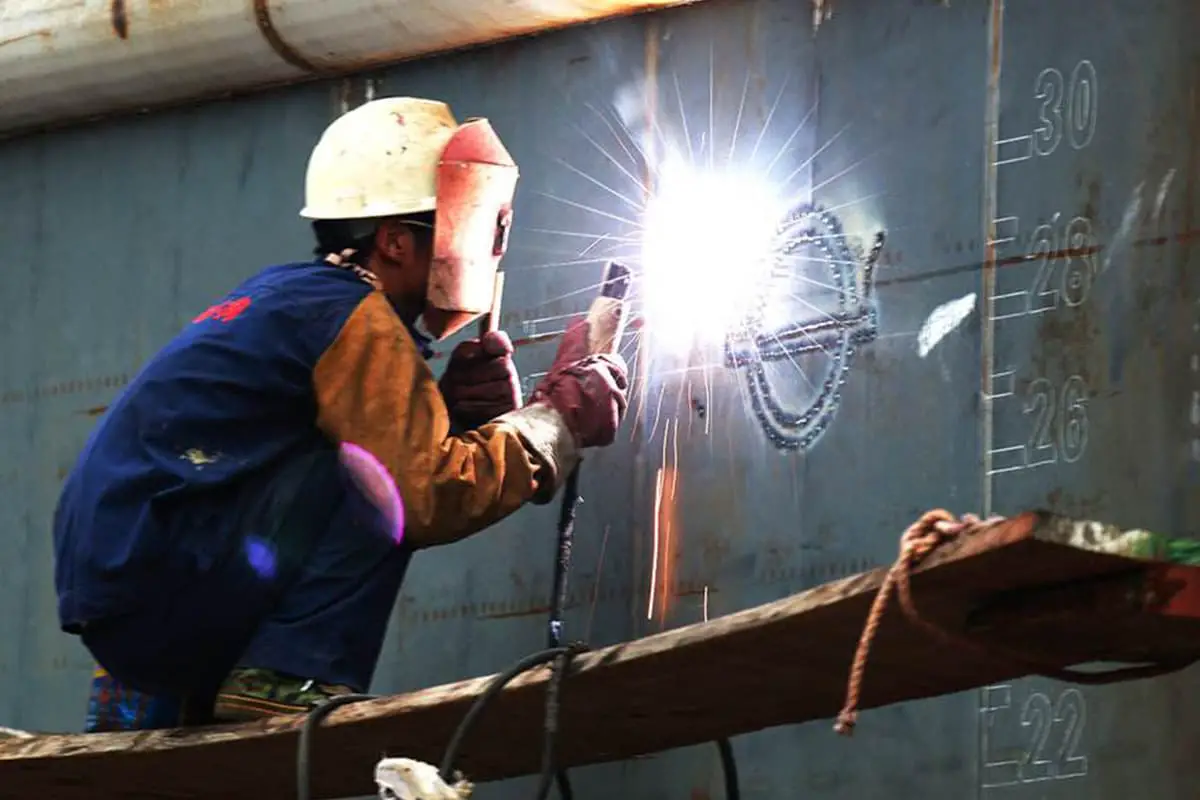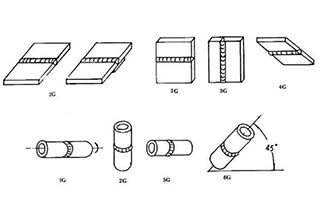
Ever wondered why welding in different positions can be so challenging? This article dives into the unique techniques required for overhead, flat, vertical, and transverse welding. You’ll learn practical tips to improve your welding skills, handle common issues, and ensure safety. Whether you’re a beginner or a seasoned welder, discover how to achieve clean, strong welds in any position. Dive in to enhance your welding expertise and master these essential techniques.
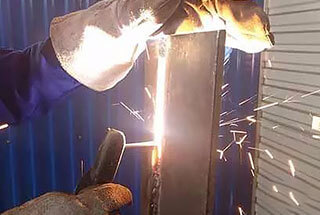
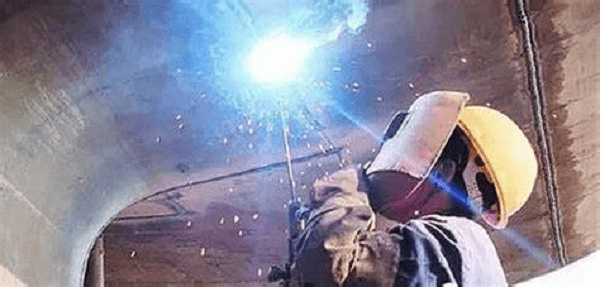
Molten metal falls naturally due to gravity, and the shape and size of the molten pool cannot be controlled.
Transporting the strip can be challenging, and achieving a flat weldment surface may not be necessary.
Defects such as slag inclusion, incomplete penetration, weld beading, and poor weld formation are common issues.
Molten weld metal can splash and scatter, which poses a risk of scalding accidents.
Overhead welding tends to be less efficient than welding in other positions.
When performing butt weld overhead welding and the thickness of the weldment is less than or equal to 4mm, type I groove should be used. A φ3.2mm electrode should be selected, and the welding current should be moderate. For welding thicknesses greater than or equal to 5mm, multi-layer and multi-pass welding should be utilized.
For overhead welding of T-joint welds, single-layer welding should be used when the weld leg is less than 8mm. However, when the weld leg is greater than 8mm, multi-layer and multi-pass welding should be adopted.
When considering the specific situation, the appropriate strip transportation method should be adopted.
(1) For small welding leg sizes, linear or linear reciprocating strip transportation should be used to complete single-layer welding. For larger welding leg sizes, multi-layer welding or multi-layer and multi-pass welding strip transportation can be adopted. The first layer should use linear strip transportation, while inclined triangular or inclined ring strip transportation can be used for subsequent layers.
(2) Regardless of the strip transportation method used, the amount of weld metal added to the molten pool at each time should not be excessive.

Fusion welding relies primarily on its own weight to transition into the molten pool.
The shape and composition of the molten pool are easily maintainable and controllable.
When welding metal with the same plate thickness, the welding current required for flat welding positions is higher than that for other welding positions, resulting in increased production efficiency.
The mixing of slag and the molten pool is common, particularly during the welding of flat fillet welds, which can lead to slag inclusion.
Distinguishing between the slag and molten pool of acid electrodes is difficult; alkaline electrodes offer more clarity. According to the HG20581 standard, acid electrodes are not suitable for use in class II and III vessels.
Revised version:
Incorrect welding parameters and operations can lead to the formation of defects such as weld bead irregularities, undercutting, and welding deformation.
During single-side welding where the back is left free, the first weld can easily result in uneven penetration and poor back formation.
Depending on the plate thickness, welding rods with larger diameters and higher welding currents can be selected for welding.
During welding, the electrode and weldment should form an included angle of 60 to 80 degrees, and the separation of slag and liquid metal should be controlled to prevent slag from getting into the weld.
For plates with a thickness of ≤ 6mm, an I-type groove is generally used for butt flat welding. For the front weld, a φ3.2 to 4 electrode short arc welding should be used, and the penetration should reach 2/3 of the plate thickness. Before back sealing, the root does not need to be cleaned (except for important structures), but the slag should be cleaned, and the current can be higher.
In case of unclear mixing of slag and molten pool metal in butt flat welding, lengthen the arc, tilt the welding rod forward, and push the slag behind the molten pool to prevent slag inclusion.
When welding horizontal and inclined welds, uphill welding should be used to prevent slag inclusion and to keep the molten pool from moving forward.
When using multi-layer and multi-pass welding, pay attention to the number of welding passes and welding sequence, and make sure that each layer does not exceed 4 to 5mm.
For T-type, fillet, and lap flat angle welded joints, if the thickness of the two plates is different, the electrode angle should be adjusted to deflect the arc to one side of the thicker plate to ensure that both plates are heated evenly.
Correct Selection of Strip Transportation Method
(1) For i-groove butt and flat welding with welding thickness less than or equal to 6mm, straight-line strip transportation is recommended for the front weld when double-sided welding is used, which may have a slightly slower speed. The back weld should also adopt linear strip transportation, but with a slightly larger welding current and faster speed.
(2) When the plate thickness is ≤ 6mm and other forms of groove are opened, multi-layer welding or multi-layer multi-pass welding can be used. For the first layer of backing welding, a low current electrode with a linear or serrated electrode welding method is recommended.
When welding the filler layer, an electrode with a larger diameter and a short arc welding with a larger welding current can be selected.
(3) When the leg size of flat fillet welding of T-joint is less than 6mm, single-layer welding is recommended. The linear, oblique ring, or sawtooth strip transportation method can be used. For large welding leg sizes, multi-layer welding or multi-layer multi-pass welding should be adopted.
For backing welding, the linear strip transportation method is recommended, and for the filling layer, the inclined sawtooth and inclined ring strip transportation methods can be selected.
(4) For multi-layer and multi-pass welding, it is generally recommended to use the linear strip welding method.
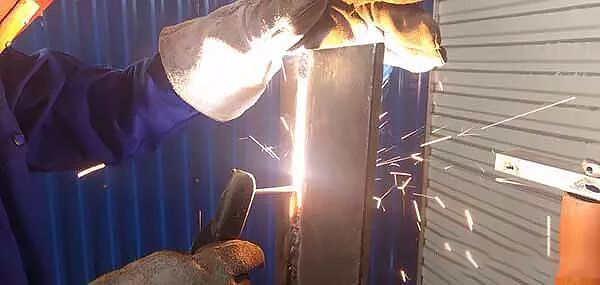
Molten metal and slag can easily separate as they fall under their own weight.
If the temperature of the molten pool is too high, the molten metal may flow down and cause defects such as weld beading, undercutting, and slag inclusions, resulting in uneven welding.
Incomplete penetration is a common issue that can occur at the root of T-joint welds.
The degree of penetration can be easily controlled.
Welding productivity is lower for T-joint welding compared to flat welding.
Ensure Correct Electrode Angle:
Vertical welding upwards is commonly used in production, and for vertical welding downwards, special welding rods should be used to ensure weld quality. The welding current for vertical welding upwards should be 10-15% less than that of flat welding, and for smaller electrode diameters (<0.05), a φ4mm diameter should be selected.
Short arc welding should be adopted to reduce the distance from droplet transition to the molten pool.
Adopt the correct strip transportation method.
(1) When vertically welding the T-groove butt joint (commonly used for thin plates), the linear, serrated, and crescent strip transportation method is commonly used, and the maximum arc length should not exceed 6mm.
(2) For other forms of groove butt vertical welding, the first layer of the weld often uses broken welding, a crescent type with a small swing, or triangular strip welding. The subsequent layers can be transported in a crescent or sawtooth shape.
(3) During vertical welding of a T-joint, the electrode should stay on both sides and the top corners of the weld for an appropriate residence time. The swing amplitude of the electrode should not be greater than the weld width. The operation of electrode transportation is similar to that of vertical welding of other groove forms.
(4) When welding the cover layer, the shape of the weld surface depends on the strip transportation method used. For slightly higher weld surface requirements, a crescent-shaped strip can be used. For a flat surface, sawtooth strip transportation can be used (the middle concave shape is related to the pause time).

The molten metal is prone to falling into the groove due to its weight, which can result in undercut defects on the upper side and tear-drop weld beads or incomplete penetration defects on the lower side. Additionally, the molten metal and slag tend to separate easily, similar to vertical welding.
The groove for horizontal butt welding is usually V-shaped or K-shaped, and for butt joints with plate thickness of 3~4mm, type I groove can be used on both sides.
Select a small diameter electrode and use a welding current that is smaller than that used for flat welding. Short arc operation can better control the flow of molten metal.
When welding thick plates, multi-layer and multi-pass welding should be adopted in addition to backing welds.
During multi-layer and multi-pass welding, special attention should be paid to controlling the overlapping distance between welding passes.
For each overlapping welding pass, start welding at 1/3 of the previous weld to prevent unevenness.
To achieve the best results, it is important to maintain an appropriate electrode angle and use a slightly blocked and uniform welding speed, depending on the specific situation.
It is also crucial to adopt the correct strip transportation method. Here are some guidelines:
(1) For type I butt horizontal welding, it is recommended to use the reciprocating linear strip transportation method for the front weld. For thicker parts, you should use a linear or small inclined annular strip, and a linear strip for the back. You may also increase the welding current accordingly.
(2) For other groove butt horizontal welding with a small gap, straight-line strip transportation is appropriate for backing welding. However, when the gap is large, you should adopt the reciprocating linear strip transportation for the backing layer. Inclined annular strip transportation is recommended for multi-layer welding of other layers, while linear strip transportation is suitable for multi-layer multi-pass welding.


